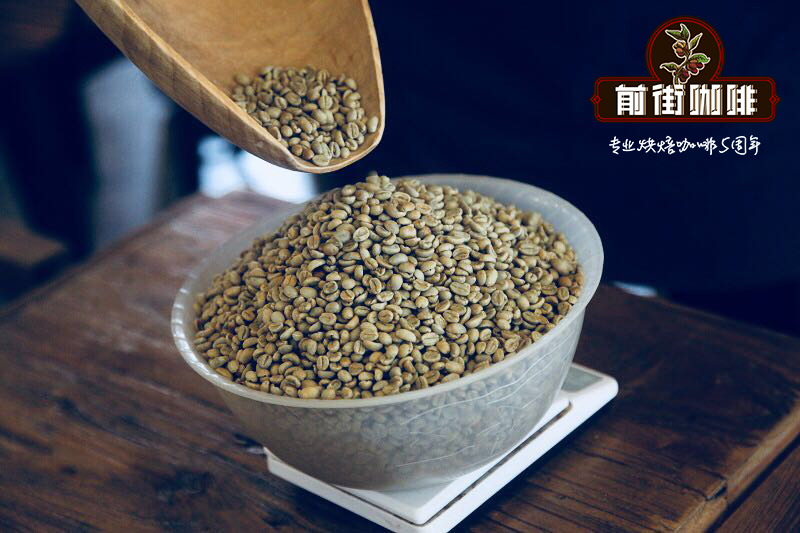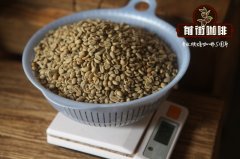Planting conditions and Regional Distribution of Coffee trees species of Coffee trees planting altitude

Professional coffee knowledge exchange more coffee bean information please follow the coffee workshop (Wechat official account cafe_style)
Planting and Regional Distribution of Coffee trees
Climate is the decisive factor for coffee cultivation. Coffee trees are only suitable for growing in the tropics or subtropics, so the zone between latitude 25 degrees south and north is generally called coffee belt or coffee area. However, not all the land located in this area can produce good coffee trees.
At present, coffee is grown in more than 70 countries in the world, all of which are located in the "coffee growth zone" with the equator as the center and between the latitudes of 25 degrees south and north. The "coffee growth zone" basically has five ideal natural conditions for the growth of coffee trees:
The four seasons are as warm as spring (18-25 degrees) and moderate rainfall (1500-2250mm). To be able to match the flowering cycle of the coffee tree.
A geographical environment with sufficient sunshine and good ventilation and drainage. However, too strong sunlight will inhibit the growth of coffee trees, so various producing areas will usually cooperate with the planting of some shade trees.
Coffee trees flourish most in soils filled with nitrogen, potassium carbonate and phosphoric acid.
The ideal altitude is 500m / 2000m.
There is absolutely no frost.
It can be seen that the conditions for the cultivation of high-quality coffee are quite strict: sunlight, rainfall, soil, altitude, air temperature, as well as the way coffee beans are harvested and the production process will affect the quality of coffee itself. Under the premise of ensuring a temperature of about 20 degrees, the higher the altitude or the closest to the Tropic of Cancer, the stronger the unique flavor of coffee.
-the growth and harvest of coffee trees-
To grow into a high-harvest and high-quality coffee tree, it is necessary to take good care of and select the seedlings. Generally, they begin to sprout about 40 days after sowing, and then transplant them to the greenhouse before they can grow into saplings. Only when the saplings grow to 40-50 cm high can they choose the healthier saplings to be transplanted to the farm. This practice is more traditional, but only in this way can the quality of coffee be guaranteed from the source.
After 5 years, the saplings grow into coffee trees, and then cut off the trunk of the tree every 8-9 years to make it grow again and control the height of the tree. After repeating this for 2 or 3 times, the harvest period of coffee trees can be as long as 30 years.
Coffee is a tropical plant, but it can't be exposed to sunlight all day long. In some areas, legume trees and banana trees are planted among coffee trees to protect them from the sun. This is called a sunshade tree. Such as Colombia, Ethiopia and so on. Costa Rica, Brazil and other places do not need these sunshade trees because of the right sunshine time.
When the coffee fruit is ripe, it should be harvested immediately, but when there are fruits of different ripening stages on the same tree, harvesting is not an easy task, which is time-consuming and labor-consuming. Generally speaking, it takes as long as 4 to 5 months to complete the harvest from the early harvest, but if the ripe and immature fruits are picked at the same time, the quality of coffee will be reduced.
-Coffee tree species-
Coffee trees can be divided into two main varieties: Arabica (Arabica) and Robusta (Robusta). There are also some minor species, such as the Liberian species (Liberica) and the Alabasta species (Arabusta), but they are rare on the market.
Although Arabica and Roberta are widely cultivated there are significant differences between them. Beans are different and tree species grow differently so their use is not the same. The world's production of Arabica beans is about 70%, while Robosta and others account for 30%.
Arabica can produce rich oil, aroma overflowing, and there will be a very light layer of dark yellow oil floating on the surface. Roberta can produce more grease, but it has a lot of foam and disappears quickly. Roberta contains twice as much caffeine as Arabica. The caffeine content is 2.2-2.4% and 1.1-1.3% respectively. If too much robusta is added to the Italian concentrate, it will taste like a gelatinous drug.
END
Important Notice :
前街咖啡 FrontStreet Coffee has moved to new addredd:
FrontStreet Coffee Address: 315,Donghua East Road,GuangZhou
Tel:020 38364473
- Prev

Ethiopia Mona Lisa sun treatment shallow baking moderate fermentation
Professional coffee knowledge exchange more coffee bean information please follow the coffee workshop (Wechat official account cafe_style) Mona Lisa to know that there are two Mona Lisa in the world, one in the Louvre in Paris, the other in Ethiopia! You may not see the real Leonardo da Vinci Mona Lisa, but you can easily taste Leonardo da Vinci's same coffee beans. Mona Lisa
- Next

The characteristics of Brazilian coffee beans, how to bake Brazilian coffee beans? Brazilian coffee bean baking curve
Professional coffee knowledge exchange more coffee bean information please follow the coffee workshop (Wechat official account cafe_style) Brazil has always been the country with the largest production of coffee beans, with a total annual output of about 2.7 million metric tons, accounting for 1/3 of the world's total coffee bean production (you can see that we drink a lot of coffee in a year) Brazil's coffee beans are concentrated in the central and southern parts of the country, and the planting areas are common.
Related
- Detailed explanation of Jadeite planting Land in Panamanian Jadeite Manor introduction to the grading system of Jadeite competitive bidding, Red bid, Green bid and Rose Summer
- Story of Coffee planting in Brenka region of Costa Rica Stonehenge Manor anaerobic heavy honey treatment of flavor mouth
- What's on the barrel of Blue Mountain Coffee beans?
- Can American coffee also pull flowers? How to use hot American style to pull out a good-looking pattern?
- Can you make a cold extract with coffee beans? What is the right proportion for cold-extracted coffee formula?
- Indonesian PWN Gold Mandrine Coffee Origin Features Flavor How to Chong? Mandolin coffee is American.
- A brief introduction to the flavor characteristics of Brazilian yellow bourbon coffee beans
- What is the effect of different water quality on the flavor of cold-extracted coffee? What kind of water is best for brewing coffee?
- Why do you think of Rose Summer whenever you mention Panamanian coffee?
- Introduction to the characteristics of authentic blue mountain coffee bean producing areas? What is the CIB Coffee Authority in Jamaica?

